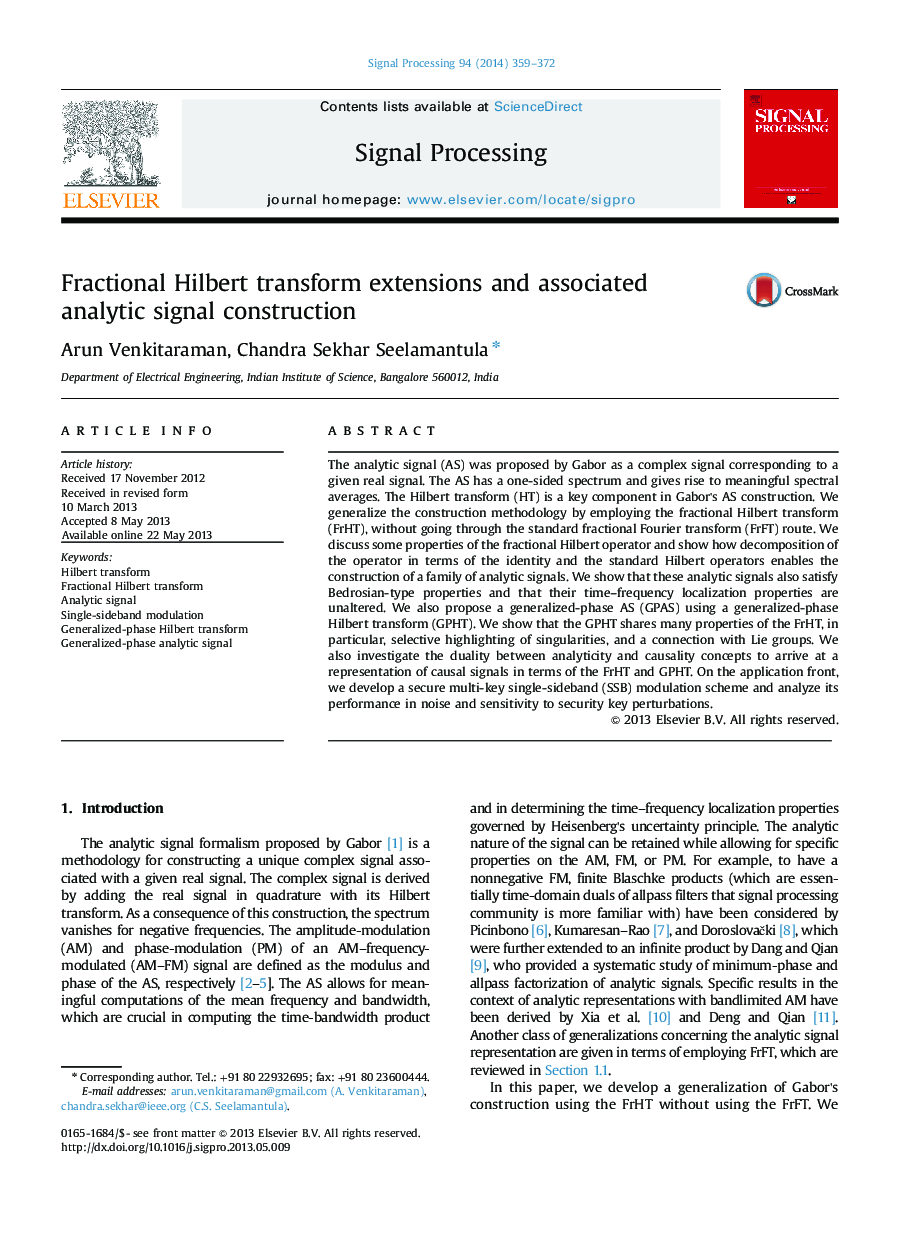| Article ID | Journal | Published Year | Pages | File Type |
|---|---|---|---|---|
| 566471 | Signal Processing | 2014 | 14 Pages |
•We propose a generalized construction of the analytic signal (AS) using the fractional Hilbert transform (FrHT).•We propose a functional generalization of the FrHT called the generalized-phase HT (GPHT), using which shares many properties of the FrHT.•Using the GPHT we construct a further generalization of the AS called the generalized-phase analytic signal (GPAS).•We also investigate the duality between analyticity and causality to arrive at representation of causal signal in terms of FrHT/GPHT.•We develop a secure multi-key single-sideband modulation scheme and analyze its performance in noise and sensitivity to security-key perturbations.
The analytic signal (AS) was proposed by Gabor as a complex signal corresponding to a given real signal. The AS has a one-sided spectrum and gives rise to meaningful spectral averages. The Hilbert transform (HT) is a key component in Gabor's AS construction. We generalize the construction methodology by employing the fractional Hilbert transform (FrHT), without going through the standard fractional Fourier transform (FrFT) route. We discuss some properties of the fractional Hilbert operator and show how decomposition of the operator in terms of the identity and the standard Hilbert operators enables the construction of a family of analytic signals. We show that these analytic signals also satisfy Bedrosian-type properties and that their time–frequency localization properties are unaltered. We also propose a generalized-phase AS (GPAS) using a generalized-phase Hilbert transform (GPHT). We show that the GPHT shares many properties of the FrHT, in particular, selective highlighting of singularities, and a connection with Lie groups. We also investigate the duality between analyticity and causality concepts to arrive at a representation of causal signals in terms of the FrHT and GPHT. On the application front, we develop a secure multi-key single-sideband (SSB) modulation scheme and analyze its performance in noise and sensitivity to security key perturbations.
